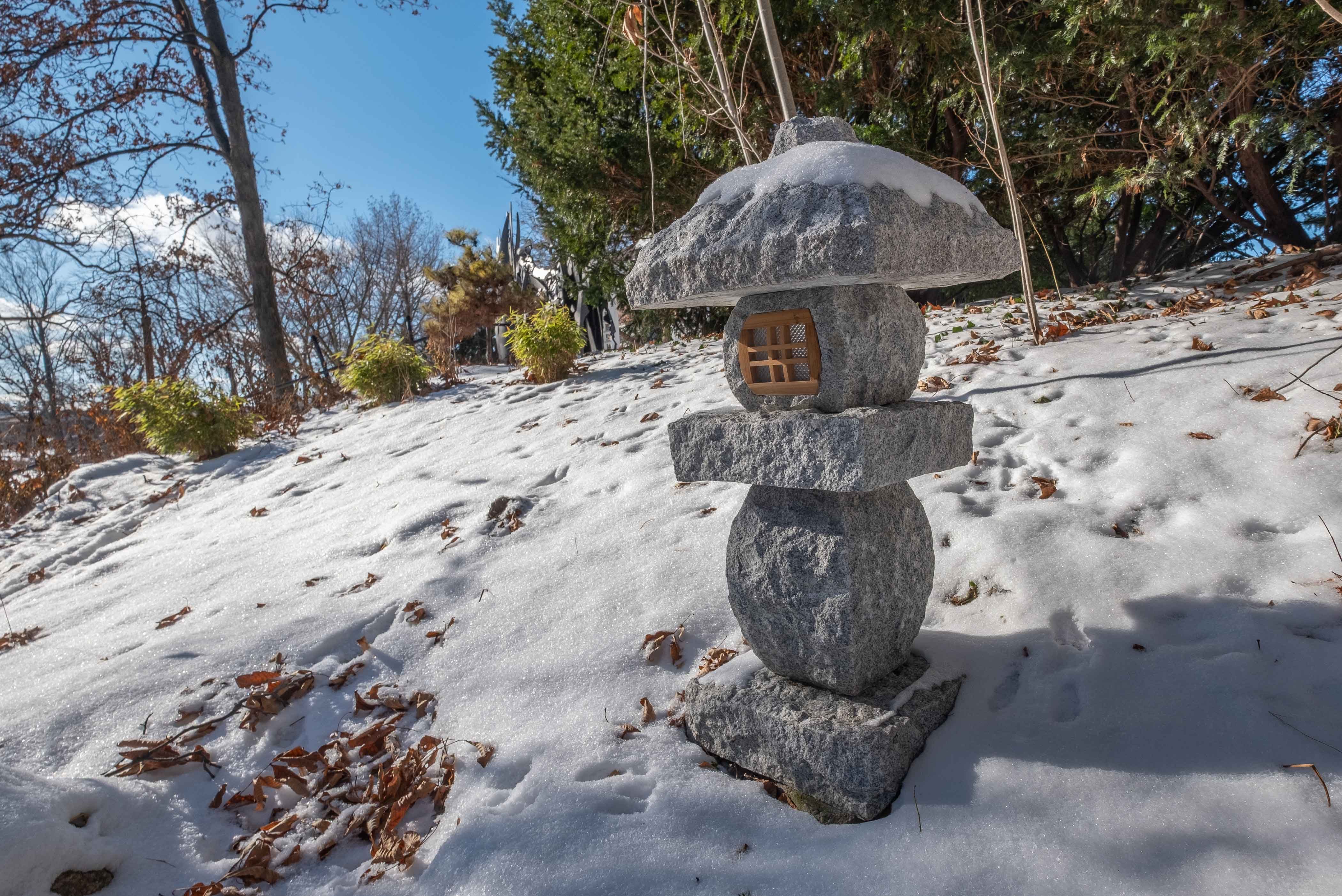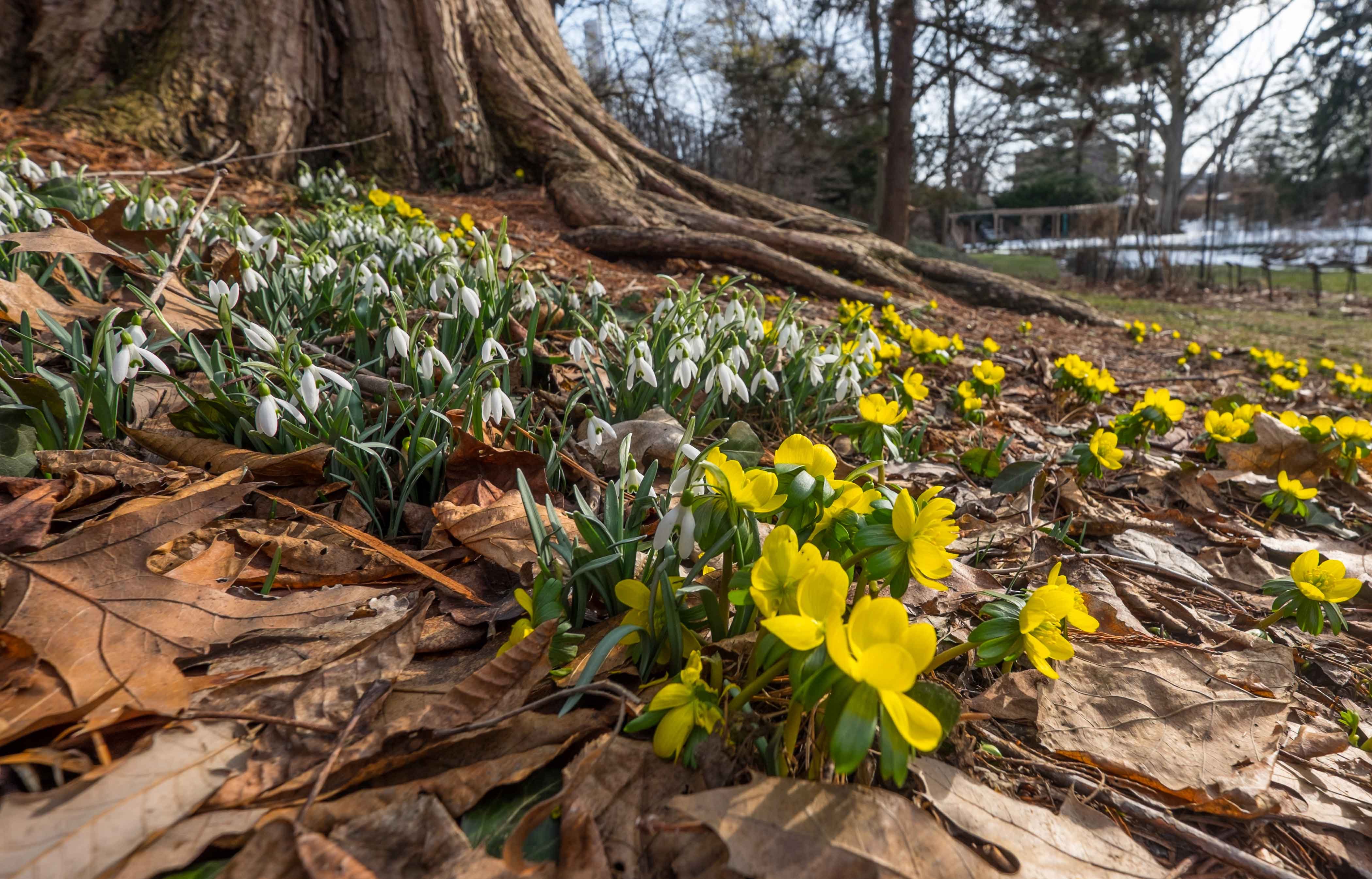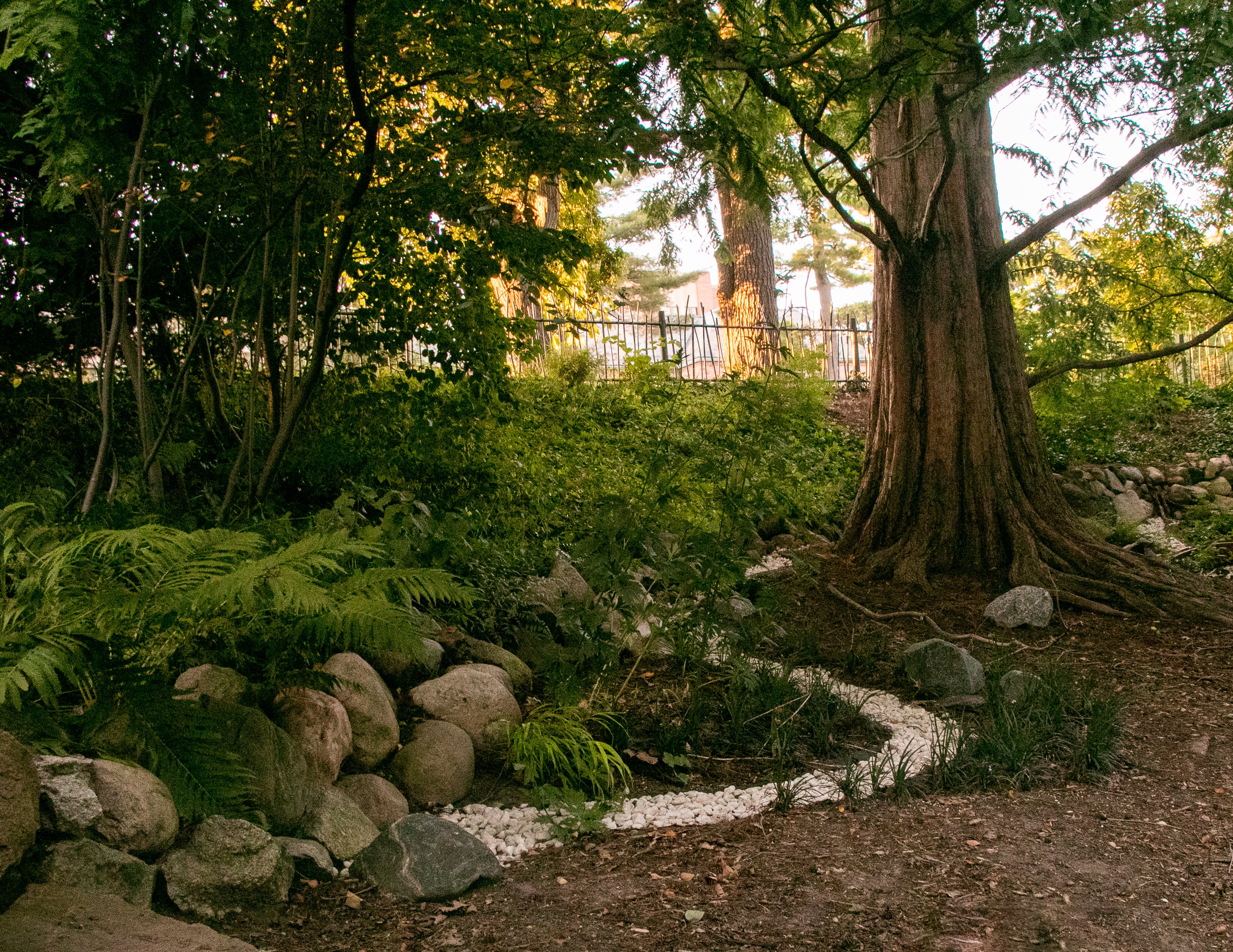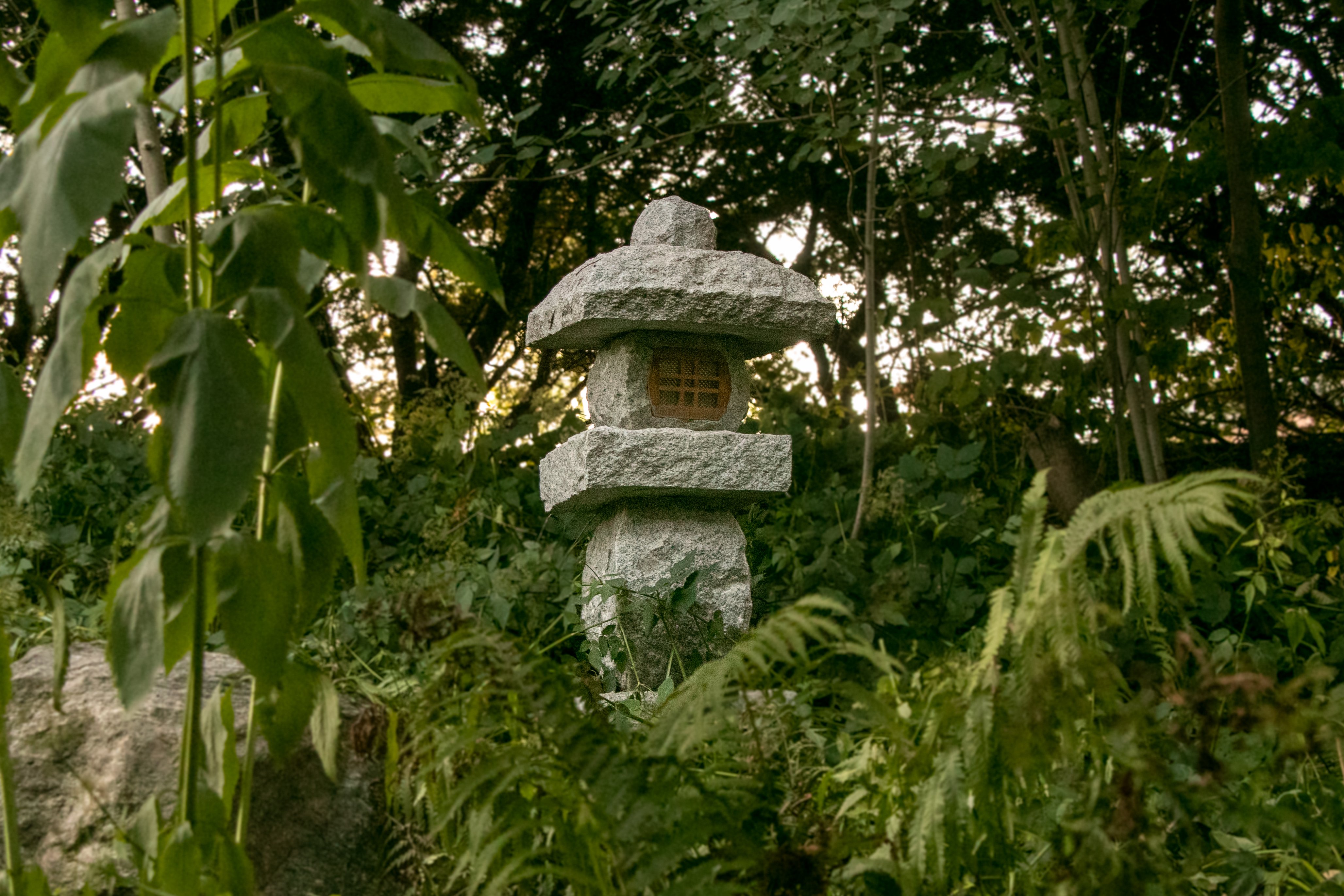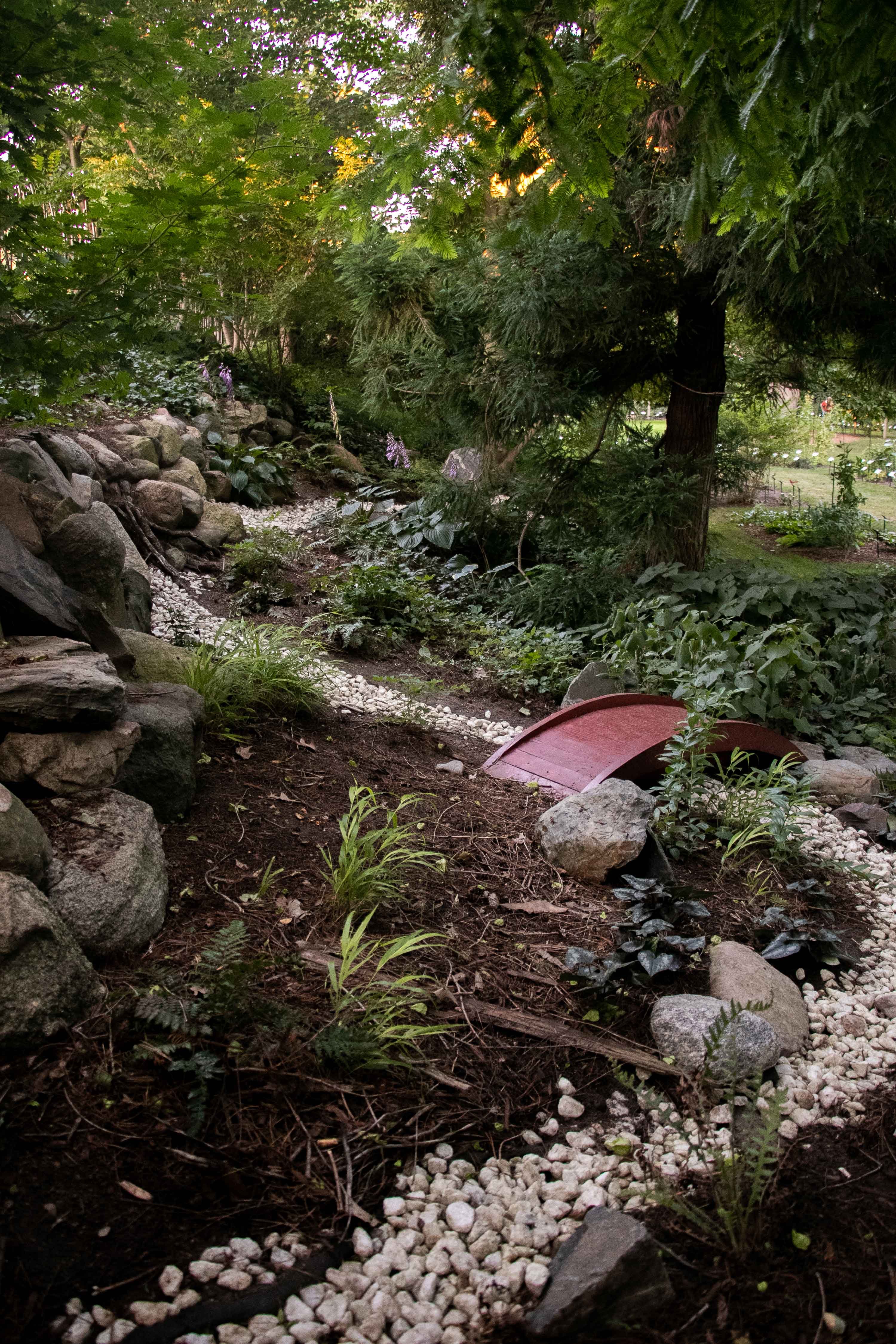Asian Hillside Collection
Most Asian garden designs are influenced by cultural philosophies, and the design spirit is always surrounded by mother nature. In large-scale spaces, designers take advantage of the existing natural characters in garden designs. In a small-scale space, it is common to see which garden elements mimic the natural features. Man-made elements are frequently integrated into the landscape features as works of art. This is the basic design principle used for the Asian Hillside installation. Including culture into the garden makes the space meaningful rather than just a plant collection.
The proposed Asian collection area is on a steep slope causing limits to physical visitor access. Even though the hillside is facing south, the existing mature tree canopies create heavy shade to counteract the sunlight. Although these factors limit the selection for the plant materials and accessibility, this design is trying to maximize the existing features to create interest for all visitors.
Photo courtesy of University Communications.

Mountains and rivers are the essential elements in nature. The creation of an artificial rock river interweaving with the plant materials on the existing hillside makes the whole area come to life and extends the visual perspective. The rock river acts as a garden spine to connect three interested focal areas. A magnificent existing Dawn redwood (Metasequoia glyptostroboides) anchors the main focal point of the Asian collection area with a red wooden bridge. These features will attract visitors from a distance.
Photo courtesy of Yun Cao.
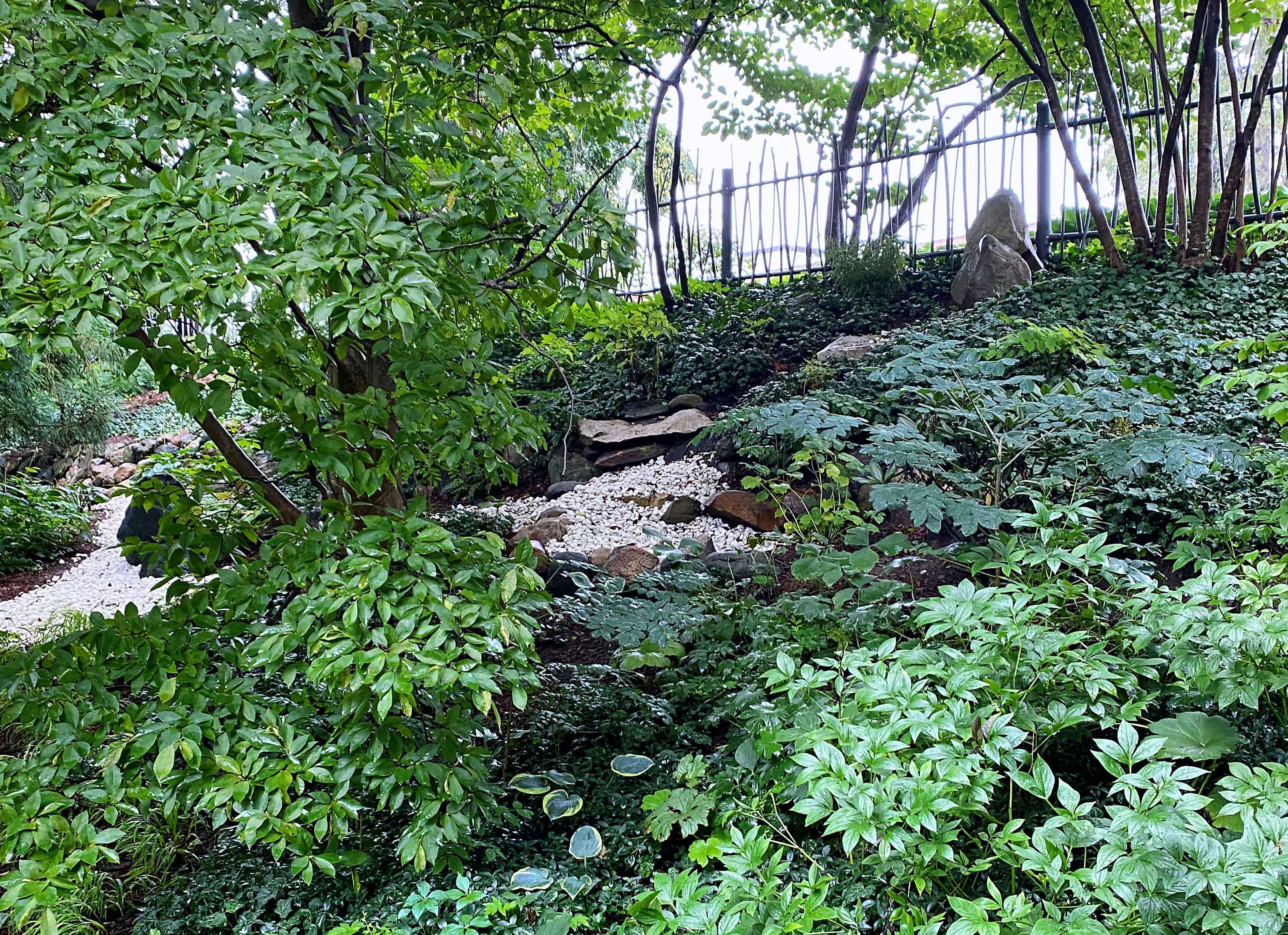
Visitors may sit under the canopy and enjoy the surrounding views and the sounds of nature, such as birds calling to one another. In the center of the Asian Hillside, a rock waterfall flows from the top of the hill and ends up in a meditation pool. Plants around the pool provide an area of tranquility. At the end of the Asian Hillside, the “river” ends in a small pool area. In only about 150 liner feet, the garden adds appealing attractions to encourage visitors to stop and appreciate the park and to enlarge their sense of place. Even the visitors become part of the features in the garden scenery; all elements harmonize together to capture a poetic painting.
In Asian culture, plants in the garden not only provide aesthetic purpose but also have symbolic meanings. Bamboo stands for strength and endurance. Planned ginkgo trees (Gingko biloba) represent peace and longevity, and the addition of pines will depict lushness, verticality, and honesty. The plant selections not only provide color contrast for each season, but show diverse botanical interests in different seasons.
- Yun Cao
PLA, SITES AP; Landscape Architect; Landscape Services; Infrastructure Planning and Facilities.
